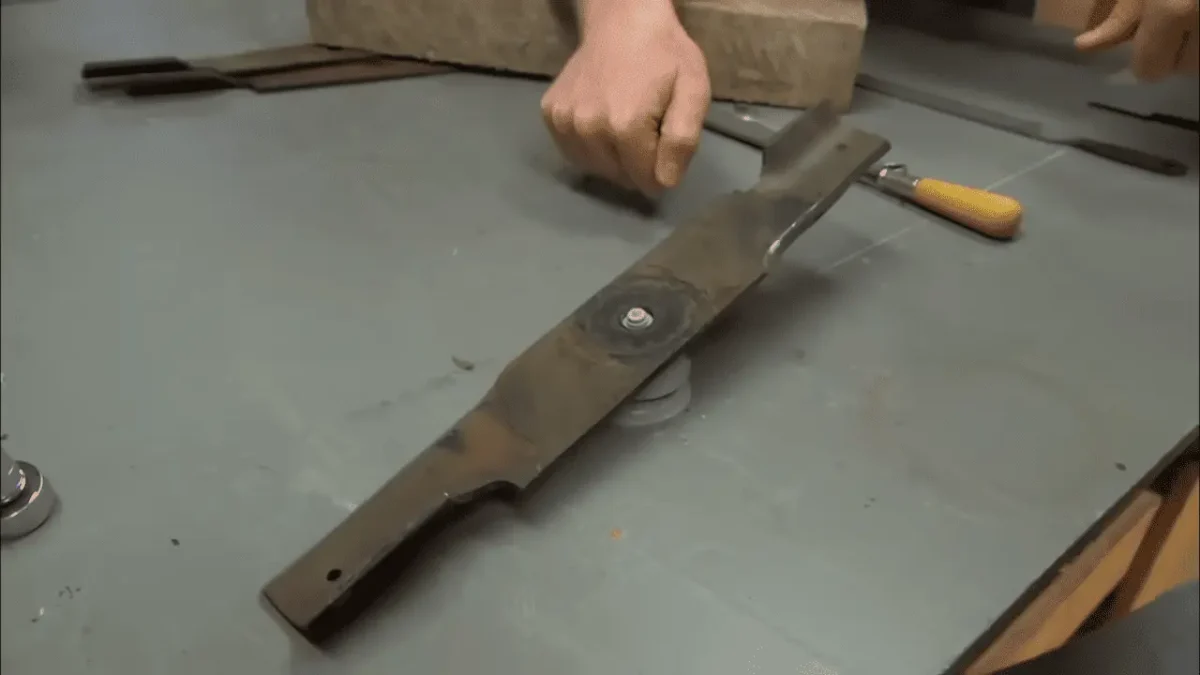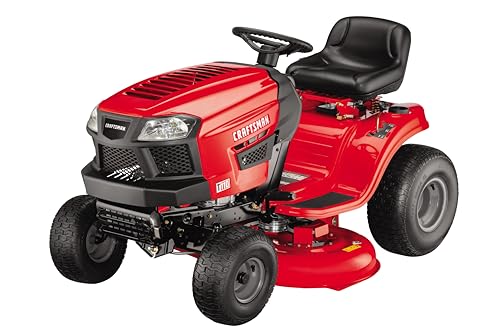Lawn Mower Blade Sharpening: A Cut Above the Rest
Spring is finally back, and that means the start of the mowing season. As you rev up your trusty mower to tackle the unruly grass, you might be tempted to sharpen those blades to surgical precision. After all, a razor-sharp edge surely guarantees a lawn worthy of a magazine cover, right? 🌿
Not so fast! Over-sharpening your lawn mower blades can lead to more harm than good. Imagine your blade catching on a hidden stone or rock—it’s more likely to chip or break. Plus, overly sharp blades dull faster, shortening their overall lifespan. And let’s not forget the safety hazard—those steel chips could end up in your grass, posing risks to pets and kids.
So, how do you strike the perfect balance? Our experts weigh in on the dos and don’ts of blade sharpening. Discover the right techniques, the best tools, and why a slightly less-sharp blade might just be your grass’s best friend. 🌱
Table of Contents
When it comes to maintaining a pristine lawn, sharp blades are your secret weapon. Dull mower blades can turn a lush green carpet into a ragged, uneven mess. But fear not! We’ve got you covered with essential tips on lawn mower blade sharpening.
Why Sharpen Your Blades?
- Efficiency and Precision:
- Sharp blades slice through grass cleanly, leaving a neat finish. Dull blades, on the other hand, tear the grass, leading to uneven growth and a less manicured look.
- Efficient cutting means less strain on your mower’s engine, saving you fuel and extending its lifespan.
- Healthier Grass:
- Clean cuts promote healthier grass. Ragged edges invite disease and pests.
- A well-sharpened blade encourages faster healing of grass after mowing.
- Safety First:
- Dull blades can kick up debris, posing risks to you, your family, and pets.
- A sharp blade reduces the chance of flying projectiles.
How to Sharpen Lawn Mower Blades
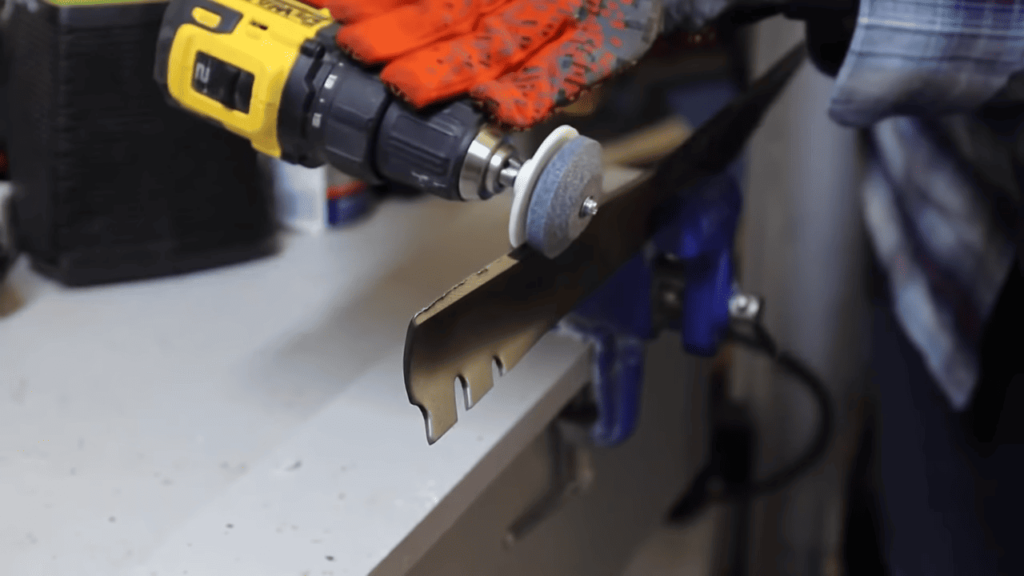
- Remove the Blade:
- Safety first! Disconnect the spark plug wire to prevent accidental starts.
- Remove the blade using a wrench or socket set.
- Inspect the Blade:
- Look for nicks, dents, or excessive wear.
- If the blade is severely damaged, consider replacing it.
- Choose Your Method:
- File Sharpening:
- Secure the blade in a vise.
- Use a flat file to sharpen the cutting edge.
- Grinding Wheel or Bench Grinder:
- Wear safety goggles.
- Steady the blade against the wheel.
- Grind evenly along the edge.
- Professional Service:
- Some hardware stores offer blade sharpening services.
- File Sharpening:
- Balance the Blade:
- A balanced blade ensures smooth operation.
- Hang the blade on a nail or use a blade balancer.
- Remove material from the heavier side until balanced.
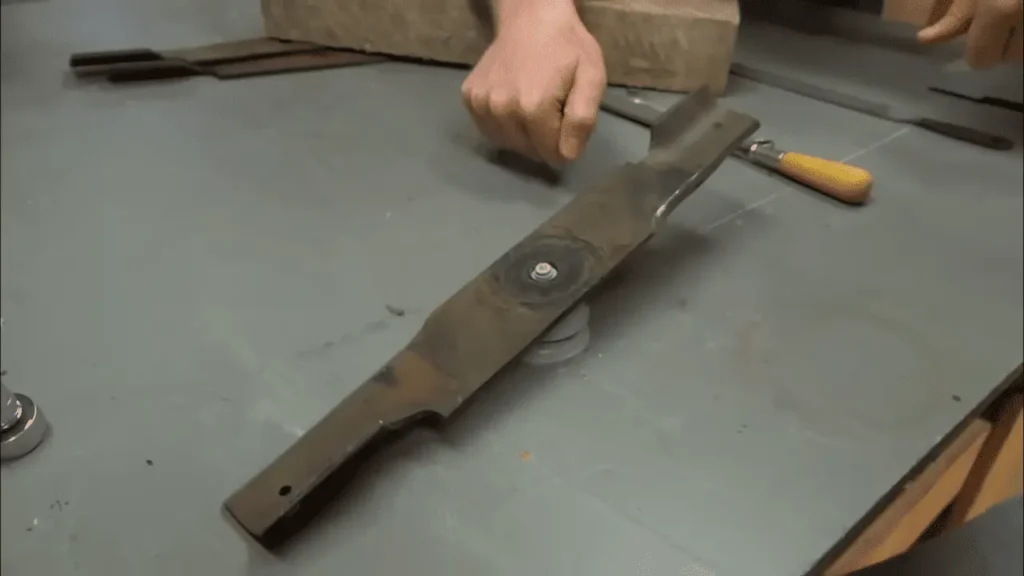
Lawn Mower Blade Sharpening Near Me
- Local Hardware Stores:
- Check if they offer blade sharpening services.
- Drop off your blade and pick it up later, razor-sharp.
- Mobile Services:
- Some professionals come to your doorstep.
- Convenience at its finest!
Can You Sharpen a Lawn Mower Blade Without Removing It?
- Yes, but with caution:
- Use a blade sharpener attachment for your drill.
- Follow safety guidelines.
- Keep the blade attached to the mower while sharpening.
Methods of Sharpening Lawn Mower Blades:
When it comes to lawn care, a well-sharpened blade is your secret weapon. Dull mower blades can turn a lush green carpet into a ragged, uneven mess. But fear not! Let’s dive into the art of blade sharpening, starting with the good ol’ hand method.
Hand Sharpening: The Art of Precision
1. How to Sharpen a Lawn Mower Blade by Hand
Hand sharpening may seem old-school, but it’s a skill every lawn enthusiast should master. Here’s how to do it:
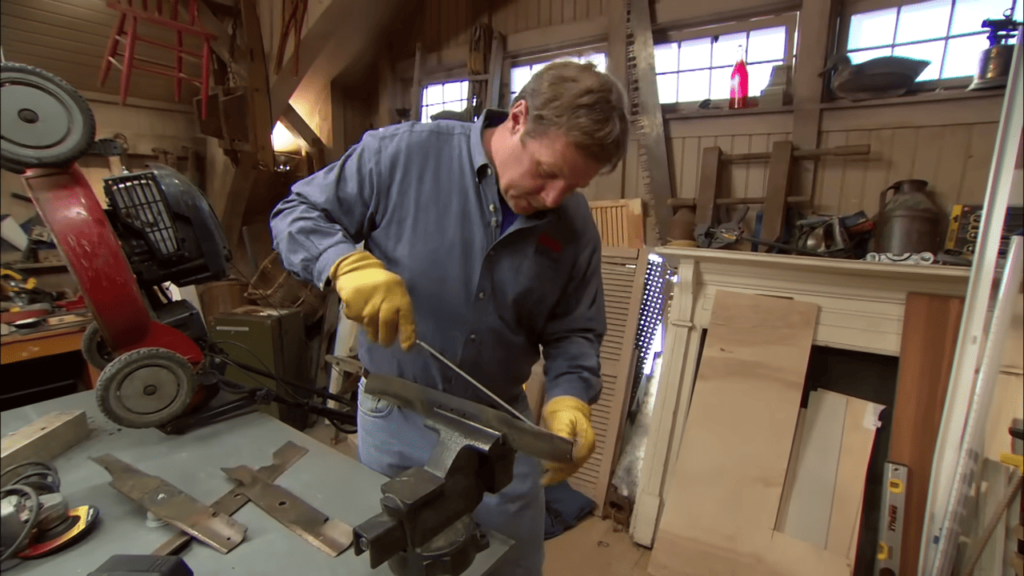
- Safety First:
- Disconnect the spark plug wire to prevent accidental starts.
- Remove the blade from the mower.
- Inspect the Blade:
- Look for nicks, dents, or excessive wear.
- If the blade is severely damaged, consider replacing it.
- Secure the Blade:
- Use a vise or clamp to hold the blade steady.
- File Away:
- Grab a flat file (mill bastard file) and position it at the cutting edge.
- Follow the original angle of the blade.
- File evenly along the edge, removing any imperfections.
- Aim for a sharp, clean edge without overdoing it.
- Balance Check:
- A balanced blade ensures smooth operation.
- Hang the blade on a nail or use a blade balancer.
- Remove material from the heavier side until balanced.
2. Sharpening a Lawn Mower Blade by Hand: Tips and Tricks
- Angle Matters:
- Maintain the original angle of the blade (usually around 30 degrees).
- Consistency is key—keep the same angle throughout.
- Bevel It Right:
- The bevel (the curved part of the blade) should be sharp but not razor-thin.
- Avoid creating a fragile edge that chips easily.
- Count Those Strokes:
- Aim for 5–10 strokes with the file.
- Check progress frequently.
- Test the Sharpness:
- Run your finger lightly along the edge (carefully!).
- If it feels smooth and sharp, you’re golden.
3. Sharpen a Lawn Mower Blade by Hand: Common Mistakes
- Over-Sharpening:
- Yes, there is such a thing! Blades that are too sharp dull faster.
- A slightly less-sharp blade can handle rocks and debris better.
- Inconsistent Angles:
- If your blade resembles a Picasso painting, you’ve gone astray.
- Maintain that consistent angle!
Why Hand Sharpening?
- Cost-Effective:
- No fancy tools required—just a file and some elbow grease.
- Saves money on professional sharpening services.
- Connection with Your Mower:
- Hand sharpening lets you bond with your trusty mower.
- You’ll appreciate the effort when your lawn looks pristine.
Lawn Mower Blade Sharpening: Tools, Techniques, and Tips
Maintaining a well-manicured lawn requires more than just regular mowing—it demands sharp, efficient lawn mower blades. Dull blades can tear grass instead of cutting it cleanly, leading to ragged edges, stress on the mower’s engine, and an overall lackluster lawn appearance. Fear not! In this comprehensive guide, we’ll explore the art of lawn mower blade sharpening, covering various tools, techniques, and tips to keep your blades in top condition.
1. Dremel Lawn Mower Blade Sharpener


Why Dremel?
The Dremel A679-02 Sharpening Attachment Kit is a versatile choice for lawn mower owners. Here’s why:
- Compatibility: It fits Dremel rotary tools (models 100, 200, 3000, 4000, 7760, 8220, 8240, 8250, and 8260) and even the Dremel 4300 when used with the collect and collect nut.
- Attachments: The kit includes three popular attachments:
- Garden Tool Sharpening Attachment: Perfect for shovels, shears, hoes, and axes.
- Lawn Mower Sharpening Attachment: Ideal for most mower blades.
- Chain Saw Sharpening Attachment: Revives dull chain saw blades.
- Sharpening Stones: The kit includes aluminum oxide sharpening stones (453, 454, 455, and 932) for precise results.
How to Use the Dremel Attachment Kit
- Remove the Blade: Safely remove the mower blade using a socket set and power tools.
- Clean the Blade: Use a putty knife to remove dirt and debris from the blade and mower deck.
- Attach the Sharpening Stone: Screw on the appropriate attachment (e.g., lawn mower or garden tool) to your Dremel rotary tool.
- Sharpen the Blade: Follow the blade’s original angle, using the sharpening stone to restore its cutting edge.
- Check Balance: Use a blade balancer to ensure proper balance.
- Reinstall the Blade: Make sure the blade is oriented correctly before reattaching it to the mower.
2. Electric Lawn Mower Blade Sharpeners
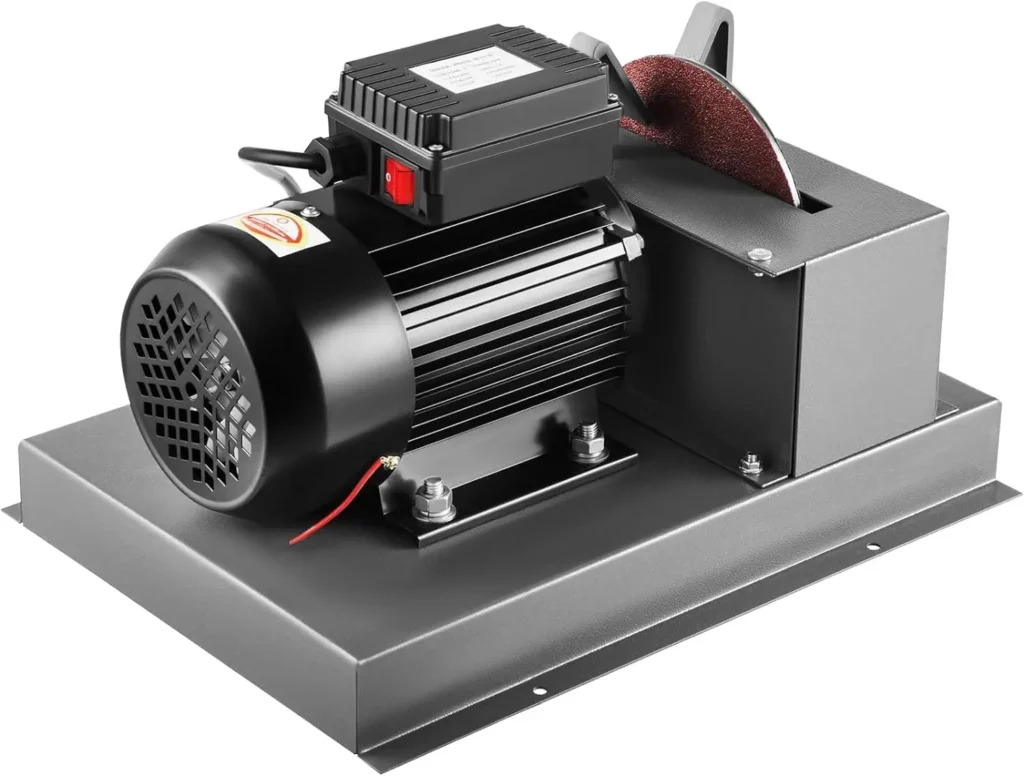

Electric sharpeners offer convenience and speed. Consider these options:
- All American Sharpener Model 5005 Gen 2:
- Pivoting head for both sections of mulching blades.
- Sharpens standard and high-lift blades.
- Handles right and left-hand blades.
- Adjustable sharpening angles.
- Oregon 88-023 Professional 1/2 HP Lawnmower Blade Grinder:
- Ideal for professional landscapers.
- Reverse switch and height adjustment features.
- Ensures precise sharpening.
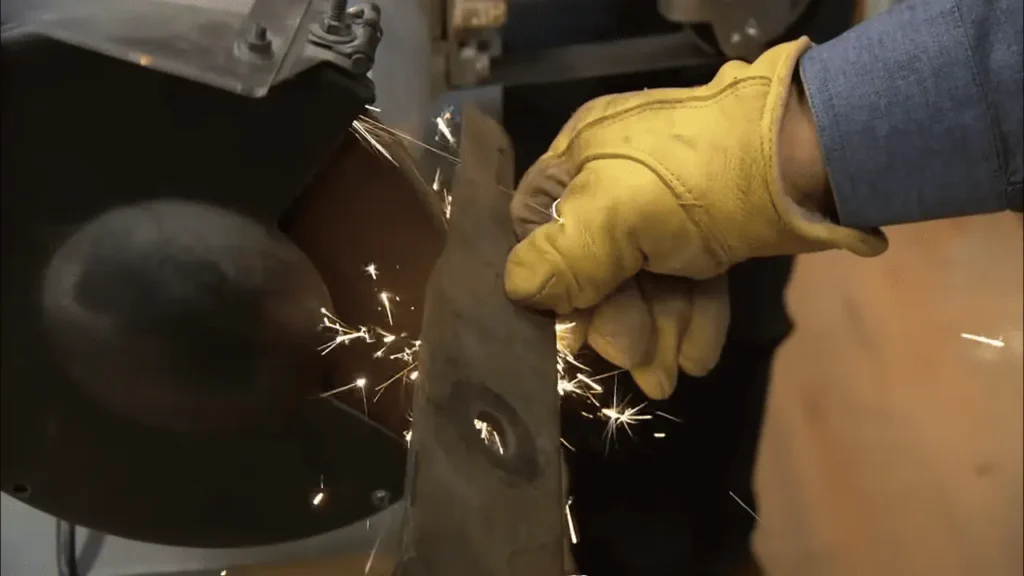

3. Flap Discs for Lawn Mower Blade Sharpening
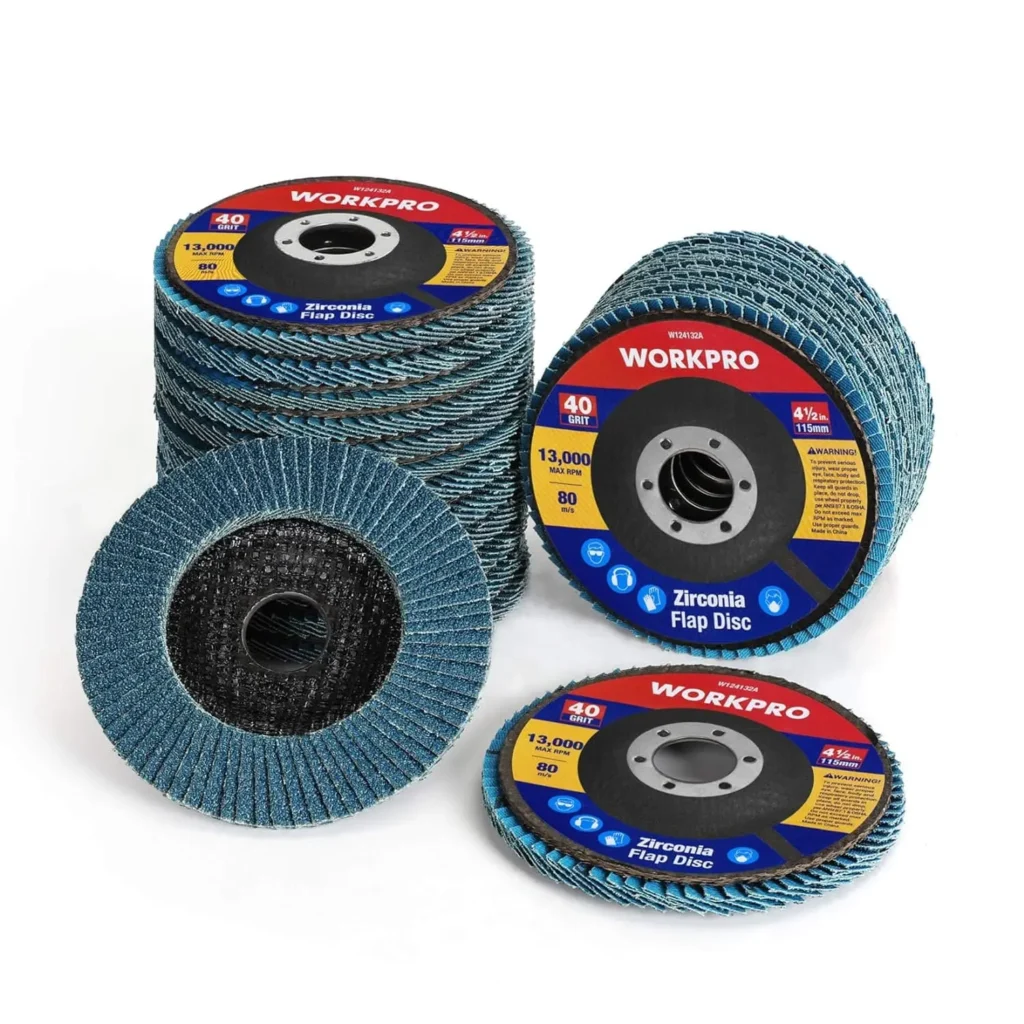

Flap discs are abrasive tools that remove material from metal surfaces. Choose the right grit for optimal results:
- Coarse Grit (24 to 60):
- For severely damaged blades with deep nicks and chips.
- Quick material removal but use with caution.
- Shape the blade back to its original form.
- Medium Grit (80 to 120):
- Suitable for moderate blade damage.
- Removes smaller nicks and restores the cutting edge.
- Versatile for most lawn mower blade sharpening tasks.
- Fine Grit (150 to 180):
- Ideal for relatively well-maintained blades.
- Provides a smooth finish and hones the edge to razor-sharpness.
Remember to wear safety glasses and follow proper techniques when using flap discs
4. Blade Sharpener for Lawn Mower Blades
- How to Use:
- Secure the blade in a vise or clamp.
- Use the blade sharpener tool that fits the bevel of the blade.
- Follow the manufacturer’s instructions for the specific sharpener.
- Move the sharpener along the blade edge to sharpen it evenly.
- Repeat the process on the other side of the blade.
- Balance the blade afterward.
- When to Use:
- Regular maintenance: Sharpen blades after every 20-25 hours of use.
- Signs of dullness: If the grass looks frayed or unevenly cut, it’s time to sharpen.
- Pros:
- Precise and consistent cut.
- Healthier grass due to clean cuts.
- Professional-looking finish.
- Quiet operation.
- Environmentally friendly (no emissions).
- Cons:
- Higher cost.
- Limited usage (best for flat, even lawns).
- Not suitable for all grass types.
- Requires more maintenance (regular blade sharpening).
5. Cylinder Lawn Mower Blade Sharpener


- How to Use:
- Backlapping: Lay the mower down, scrape off grass from blades, tighten screws, and test the mower.
- Clean and sharpen with a knife.
- When to Use:
- Regular maintenance.
- Signs of dullness or uneven cutting.
- Pros:
- Precise cut.
- Healthier grass.
- Professional finish.
- Quiet operation.
- Environmentally friendly.
- Cons:
- Higher cost.
- Limited usage (flat lawns).
- Not suitable for all grass types.
- Requires regular blade sharpening.
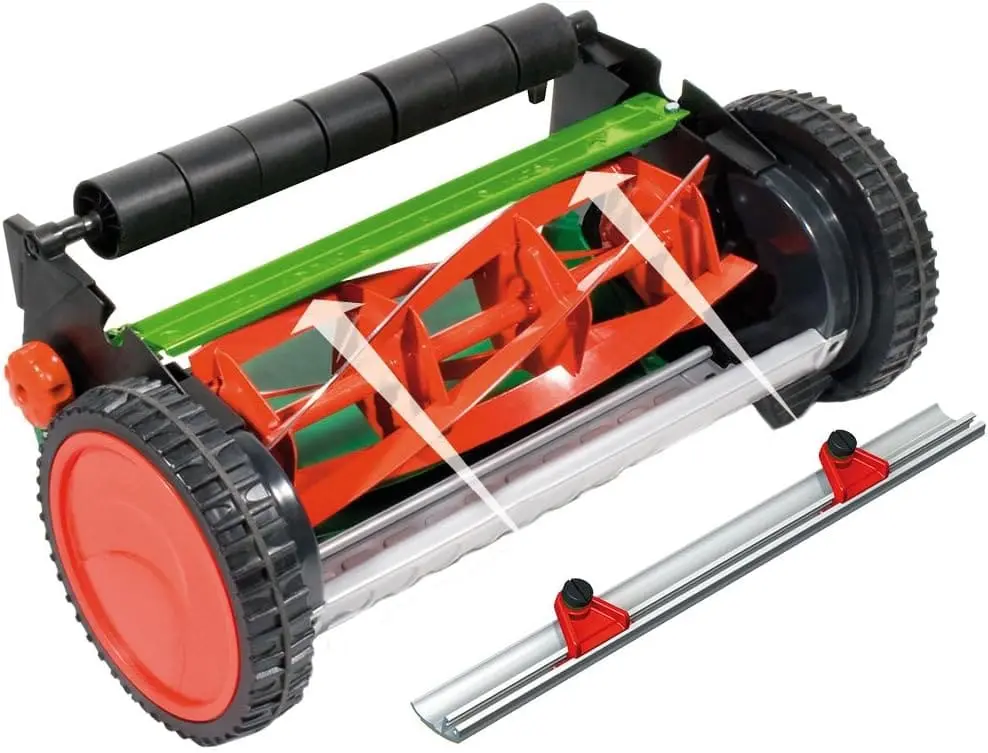

6. Bench Grinder Lawn Mower Blade Sharpener
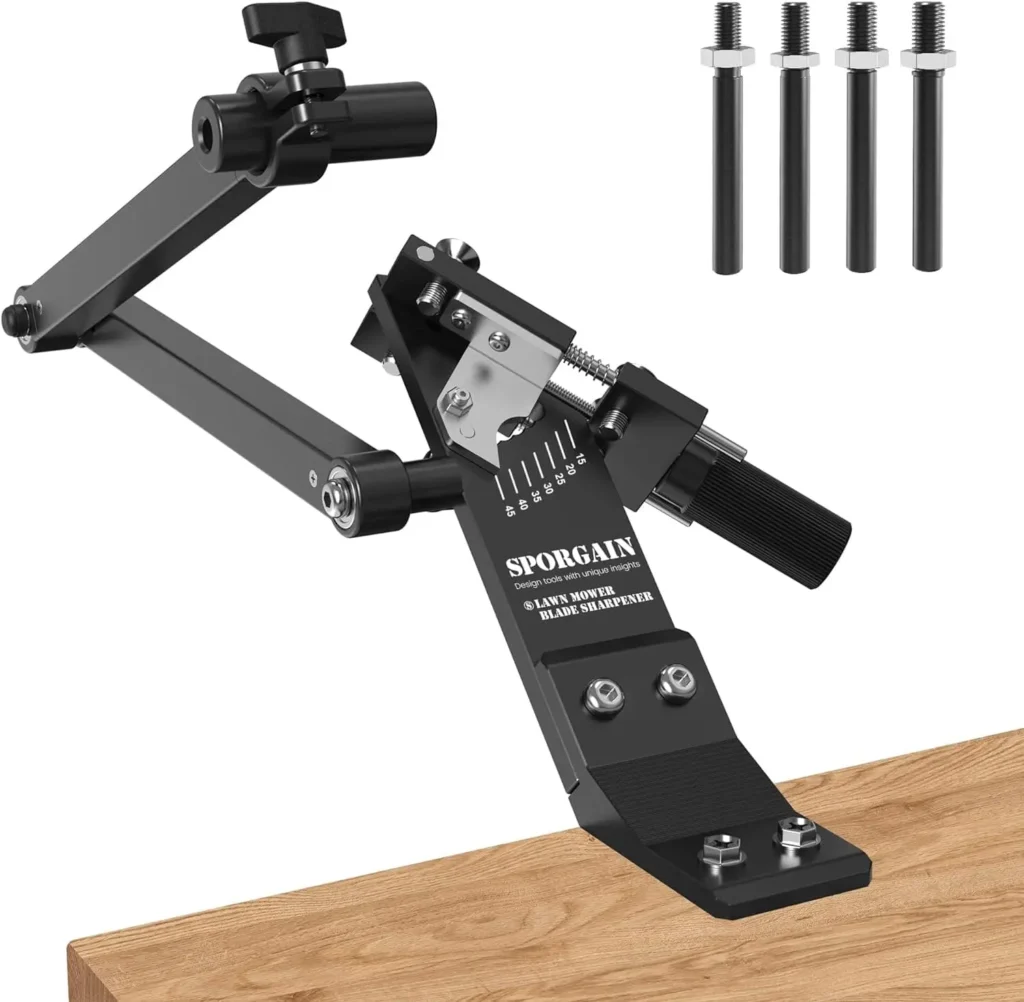

- How to Use:
- Attach to a bench grinder.
- Hold the blade against the wheel and grind along the marked angle.
- Repeat for the other edge.
- Check balance and sharpness.
- When to Use:
- When blades are dull or damaged.
- Regular maintenance.
- Pros:
- Fast and effective.
- Removes material efficiently.
- Cons:
- May not be compatible with all blade types.
- Requires safety precautions.
7. Rotary Lawn Mower Blade Sharpener
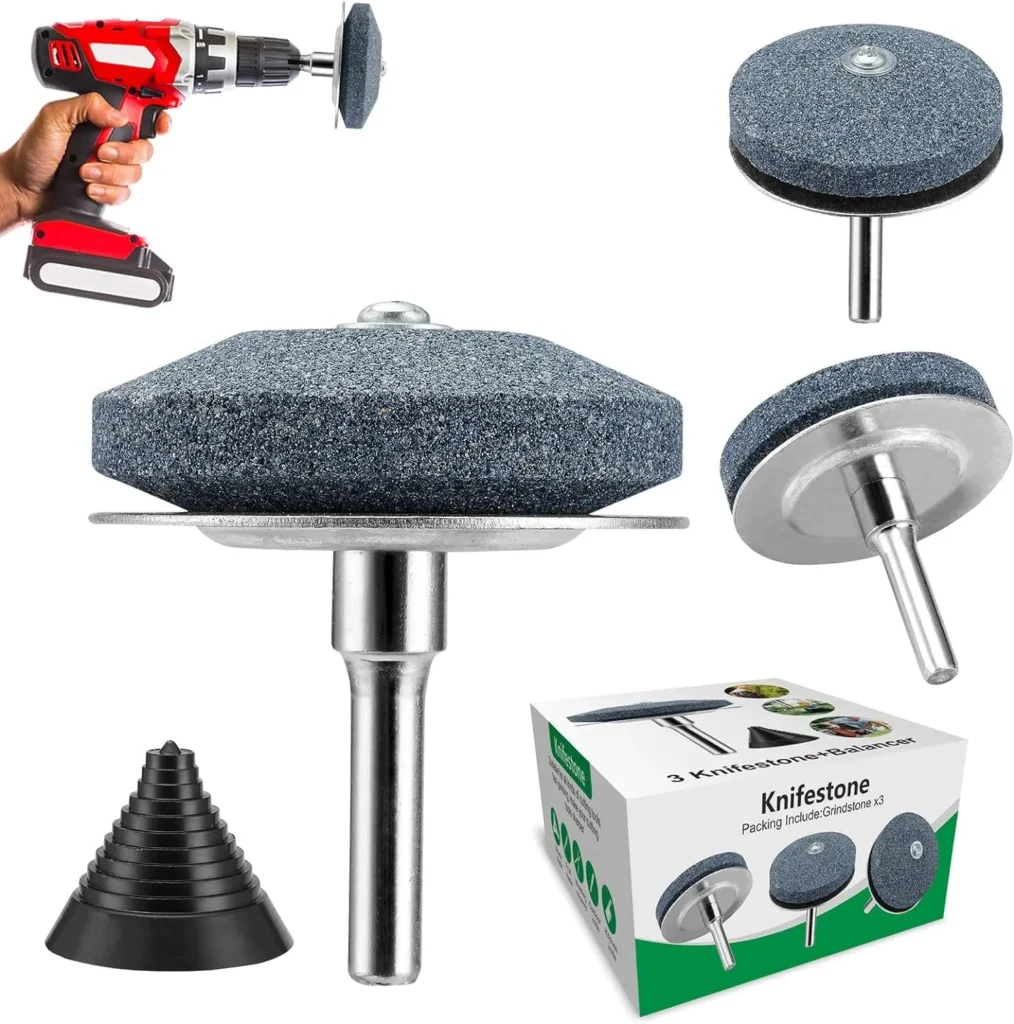

How to Use:
- Attach the sharpener to a drill.
- Run it along the blade’s edge, maintaining the same angle.
- Remove nicks and burrs until the edge is sharp.
- Check the balance using a plastic balancer or a nail in a piece of wood.
- Reinstall the blade.
When to Use:
- Regular maintenance: Sharpen blades after every 20-25 hours of use.
- Signs of dullness: If the grass looks frayed or unevenly cut, it’s time to sharpen.
Pros:
- Quick and efficient.
- Removes material efficiently.
- Helps reduce lawn mowing time.
Cons:
- Requires a drill.
- Grinds only a small amount of blade at a time.
8. Bosch Lawn Mower Blade Sharpener
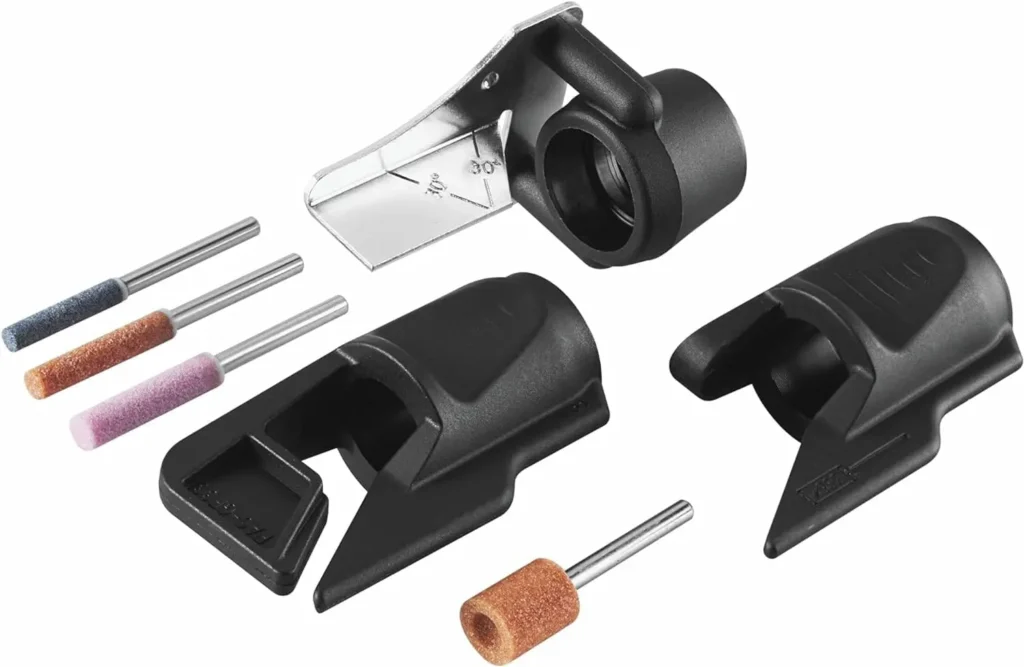

How to Use:
- Remove the blade from the lawnmower after emptying the fuel tank and closing the oil tube.
- Attach the grinding wheel and the sharpening attachment to a rotary tool.
- Run the grinding stone along the cutting edge of the blade on both sides.
- Reattach the blade to the lawnmower.
When to Use:
- When blades are dull or damaged.
- Regular maintenance.
Pros:
- Quick and efficient.
- Helps maintain a green and healthy lawn.
Cons:
- Requires a rotary tool.
9. Ace Lawn Mower Blade Sharpener
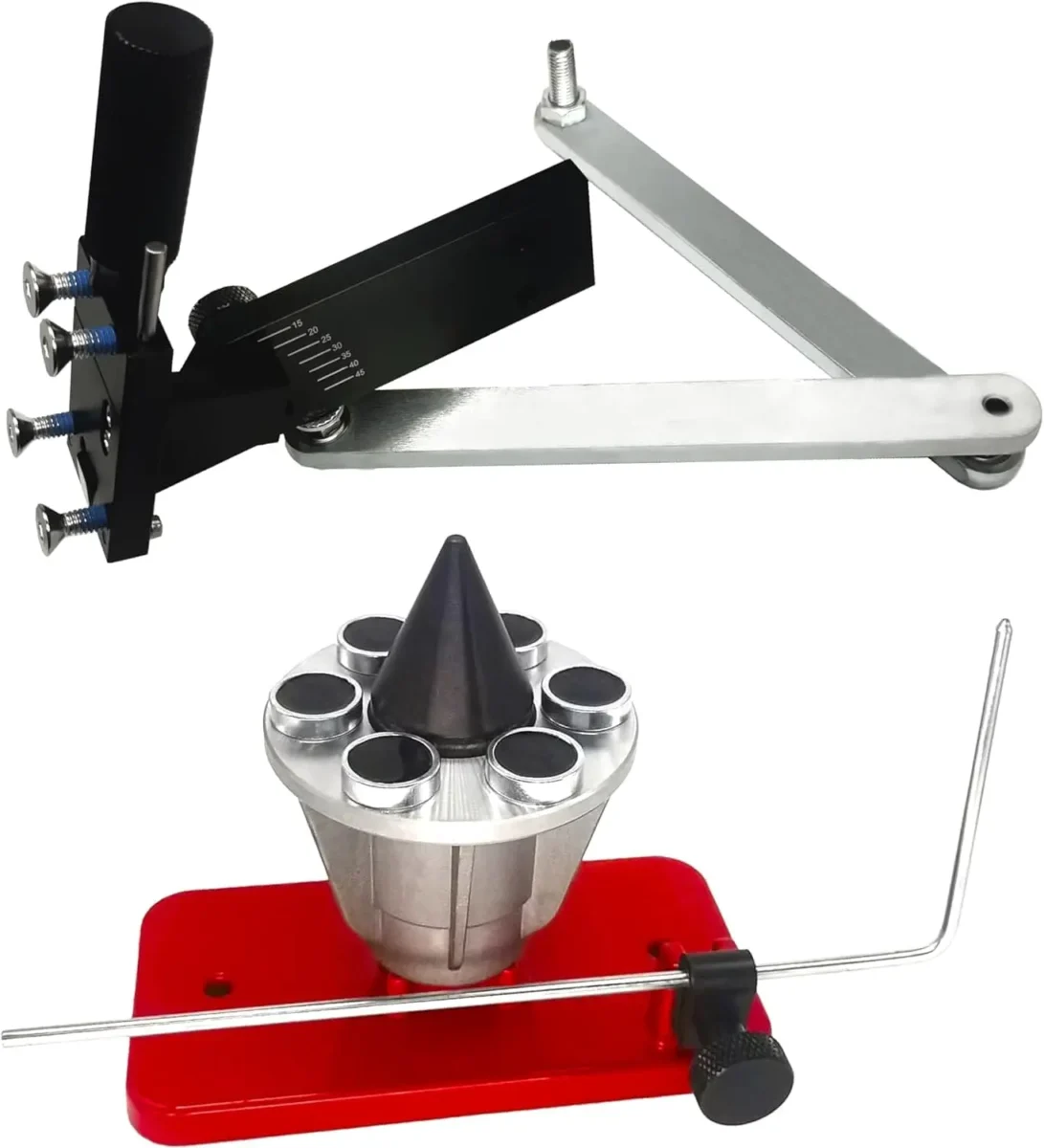

How to Use:
- Remove the spark plug wire from the engine to prevent accidental starts.
- Tip the mower onto its side and remove the nut that holds the blade.
- Use a rotary tool with a sharpening attachment to sharpen the blade.
- Reattach the blade to the lawnmower.
When to Use:
- Regular maintenance.
- Signs of dullness or uneven cutting.
Pros:
- Quick and efficient.
- Helps maintain a green and healthy lawn.
Cons:
- Requires a rotary tool.
10. B&Q Lawn Mower Blade Sharpener
How to Use:
- The SPARES2GO Universal Electric Drill Lawnmower Garden Tool Steel Blade Sharpener Attachment is a versatile option.
- Attach it to your electric drill.
- Use it to sharpen your blades—it works on most hover or rotary mowers.
- Follow the blade’s original angle to grind away nicks and burrs.
- Check the balance using a plastic balancer or a nail in a piece of wood.
- Reinstall the blade.
When to Use:
- Regular maintenance: Sharpen blades after every 20-25 hours of use.
- Signs of dullness: If the grass looks frayed or unevenly cut, it’s time to sharpen.
Pros:
- Quick and efficient.
- Removes material efficiently.
- Suitable for any power tool or drill with an adjustable chuck (shaft size: 6.5mm).
Cons:
- Requires an electric drill.
- Grinds only a small amount of blade at a time.
11. Screwfix Lawn Mower Blade Sharpener
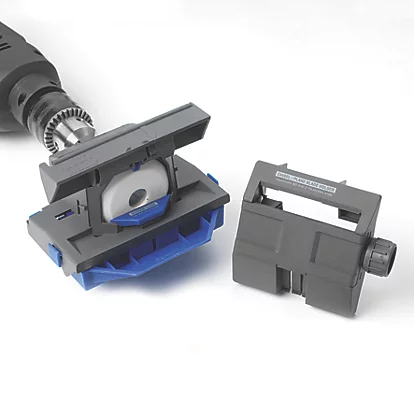

How to Use:
- The Hawksmoor Universal Rotary Lawnmower Blade Sharpener is designed to re-sharpen the metal blade on most hover or rotary lawnmowers.
- Attach it to your electric drill.
- Use it to sharpen your blades.
- Follow the blade’s original angle to grind away nicks and burrs.
- Check the balance using a plastic balancer or a nail in a piece of wood.
- Reinstall the blade.
When to Use:
- Regular maintenance.
- Signs of dullness or uneven cutting.
Pros:
- Quick and efficient.
- Removes material efficiently.
- Suitable for most hover or rotary mowers.
Cons:
- Requires an electric drill.
- Grinds only a small amount of blade at a time.
12. Wickes Lawn Mower Blade Sharpener
How to Use:
- The Spear & Jackson Razorsharp 6 in 1 Blade Sharpener has a variety of tools and accessories designed to tackle most cutting jobs within your garden.
- Can sharpen garden shears, loppers, knives, scissors, and more.
- Features a built-in handguard for maximum safety.
When to Use:
- Regular maintenance.
- Signs of dullness or uneven cutting.
Pros:
- Versatile for various cutting tools.
- Built-in safety handguard.
- Soft-feel and non-slip grip.
Remember to wear safety gear and follow manufacturer instructions for safe and effective blade sharpening. A well-sharpened blade ensures clean, smooth cuts and contributes to a beautiful lawn! 🌿🔪
Using a File to Sharpen Lawn Mower Blades
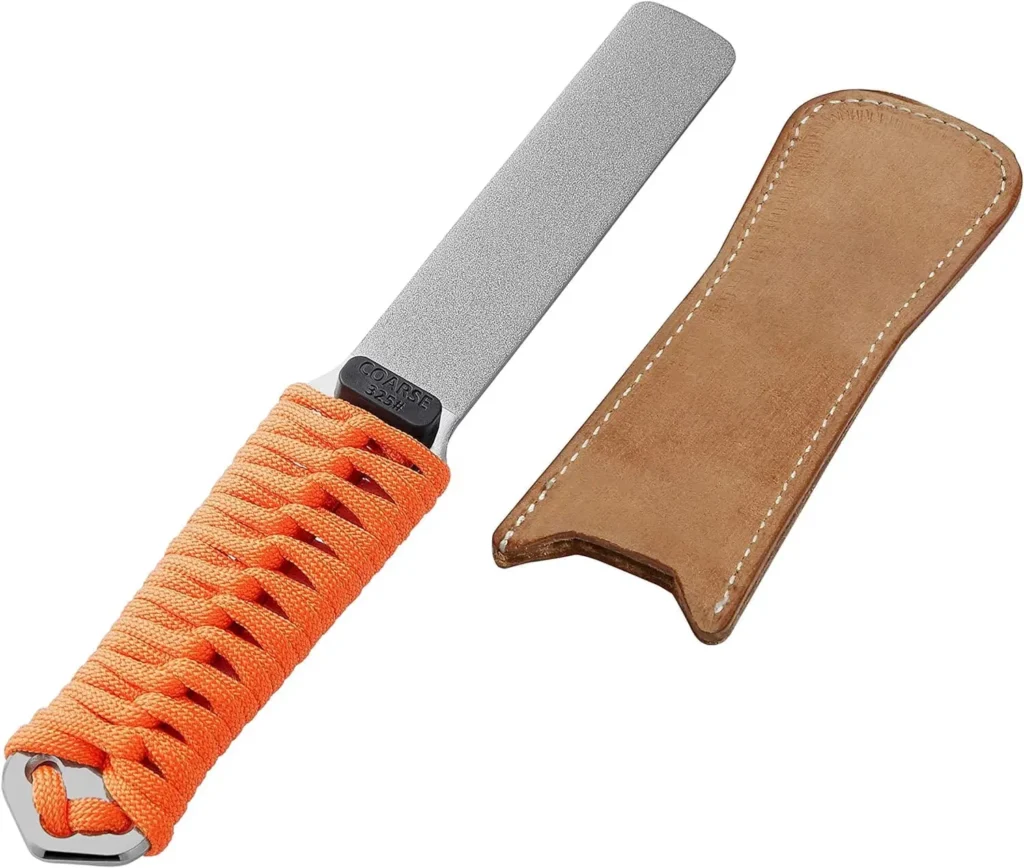

1. Why Sharpen Your Lawn Mower Blades?
Lawn mower blades play a crucial role in maintaining a healthy lawn. Over time, blades become dull due to regular use and encounters with yard debris like rocks and sticks. Dull blades can tear grass instead of cutting it cleanly, leading to an unhealthy lawn. Regular blade maintenance ensures a clean cut and helps prevent disease.
2. How to Sharpen Lawn Mower Blades with a File: Step-by-Step



Follow these steps to safely and effectively sharpen your lawn mower blades using a file:
- Safety First:
- Put on protective eye gear and gloves.
- Disconnect spark plugs and any power sources before flipping over your lawnmower to check the blades.
- Tilt Your Mower:
- Tilt the mower straight up (front up in the air) to avoid gas or oil spills.
- If you tilt the mower on its side, ensure the carburetor and air filter face up.
- Remove the Blades:
- Use a wrench to remove the nuts holding the blade in place.
- Inspect the Blades:
- Check for rough edges, hindrance to rotation, cracks, or rust.
- Mark one side of the blade for reinstallation.
- Choose the Right File:
- A bastard-cut mill file (10-12 inches) is ideal for most garden and lawn tools.
- Sharpen the Blade:
- Clamp the blade horizontally in a vise.
- Run the file along the cutting edge, using a one-way down stroke.
- Follow the existing angle (usually 45 degrees) until the blade is sharp.
- Balance the Blade:
- Use a plastic balancer or a nail in a piece of wood.
- Grind off more metal from the heavy side if the blade is uneven.
- Reinstall the Blade:
- Clean the grass from under the mower.
- Tighten the nuts properly.
3. Best File for Sharpening Lawn Mower Blades
Choose a high-quality file for effective sharpening:
- Sharpal 103N Multi-Sharpener: Versatile and easy to use.
- Grizzly Lawn Mower Gear Drill Attachment Kit: Durable corundum stone for quick sharpening.
- AccuSharp Garden Tool Sharpener: Diamond-honed tungsten carbide for various blades.
- Corona Mill Bastard Cut File: Reliable carbon and chromium file.
Lawn Mower Blade Maintenance and Sharpening Frequency
Why Sharpen Lawn Mower Blades?
A sharp blade offers several benefits:
- Clean Cuts: A sharp blade cuts grass cleanly, allowing the plant to heal and recover quickly.
- Healthier Lawn: Clean cuts promote good lawn health and prevent disease.
- Reduced Mowing Time: A sharp blade makes mowing more efficient.
How Often to Sharpen Lawn Mower Blades
- General Rule:
- Sharpen your lawn mower blade at least once per season.
- If you have a large yard or encounter debris (rocks, sticks), consider sharpening it every 25 hours of use.
- Signs Your Blade Needs Sharpening:
- Uneven grass height after cutting.
- Grass blades look torn instead of sliced.
- Brown, frayed grass edges.
- Dents or nicks in the blade.
- New Lawn Mower Blades:
- New blades come pre-sharpened from the factory.
- No need to sharpen a brand-new blade.
- Regular Maintenance:
- Inspect the blade after mowing.
- Sharpen if it looks worn or damaged.
Sharpening Techniques
- Removing the Blade:
- Disconnect spark plug wire (for safety).
- Turn the mower on its side (carburetor side up).
- Mark the blade for reinstallation.
- Remove the blade using a wrench.
- Sharpening Tools:
- Use a metal file, sharpening stone, handheld grinder, or bench grinder.
- Follow the blade’s original angle.
- Remove nicks and burrs until the edge is sharp.
- Balancing the Blade:
- Hang the blade on a nail to check balance.
- Grind off more metal from the heavy side if needed.
- Reinstalling the Blade:
- Clean the grass from under the mower.
- Tighten the nuts properly.
learn more about lawn mover blades sharpening in this video!
FAQs
How often should you sharpen lawn mower blades?
As a general rule of thumb, sharpen your lawn mower blade at least once per mowing season. If you have a large yard or encounter debris (rocks, sticks), consider sharpening it every 20-25 hours of use.
Do new lawn mower blades need to be sharpened?
New blades come pre-sharpened from the factory, so there’s no need to sharpen a brand-new blade
How can I sharpen my lawn mower blade?
You can sharpen your lawn mower blade using tools like a file, whetstone, or bench grinder. Choose the method that suits your skill level and the condition of the blade.
What is the recommended frequency for sharpening a lawn mower blade?
Regularly sharpen the blade after 25 hours of use. If you mow your lawn once a week, this translates to sharpening every 25 weeks.
